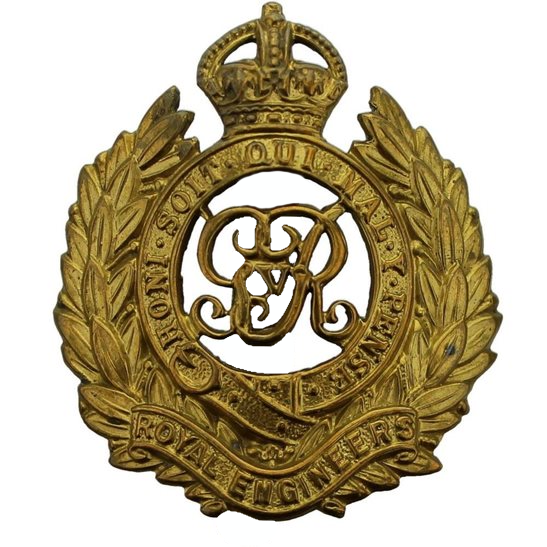Personal Details
Born: 19 August 1893 (baptised 10 September 1893)
Family: The first son of Henry Samuel and Martha Frances Blantern Mainwaring of Heath Lodge, Heath Road, Whitchurch, Shropshire. Henry married Hanna Bertha Evans in December 1922 and together they had 3 daughters – Kathleen, Doris and Margaret.
Civilian Occupation: He worked for his father on the farm. In 1939 he was employed as an estate Policeman.
Residence: He lived at Heath Lodge, Heath Road until at least 1919 when he left the army; in 1939 he was living in Poole Place, Chichester, West Sussex.
Died: On 27 August 1966, aged 73.
Military Details
Regiment: Royal Engineers (previously Royal Garrison Artillery)
Rank: Gunner
Service Number: 368383 (previously 84837)
Date of Enlistment: 25 February 1916
Date of Discharge: 22 December 1919
Reason for Discharge: Demobilisation
Other Information: He was awarded the Military Medal whilst serving in Palestine.
Henry was awarded the Military Medal and Campaign Medals (British War Medal, and Victory Medal).

The British War Medal (also known as 'Squeak') was a silver or bronze medal awarded to officers and men of the British and Imperial Forces who either entered a theatre of war or entered service overseas between 5th August 1914 and 11th November 1918 inclusive. This was later extended to services in Russia, Siberia and some other areas in 1919 and 1920. Approximately 6.5 million British War Medals were issued. Approximately 6.4 million of these were the silver versions of this medal. Around 110,000 of a bronze version were issued mainly to Chinese, Maltese and Indian Labour Corps. The front (obv or obverse) of the medal depicts the head of George V. The recipient's service number, rank, name and unit was impressed on the rim.
The Allied Victory Medal (also known as 'Wilfred') was issued by each of the allies. It was decided that each of the allies should each issue their own bronze victory medal with a similar design, similar equivalent wording and identical ribbon. The British medal was designed by W. McMillan. The front depicts a winged classical figure representing victory. Approximately 5.7 million victory medals were issued. Interestingly, eligibility for this medal was more restrictive and not everyone who received the British War Medal ('Squeak') also received the Victory Medal ('Wilfred'). However, in general, all recipients of 'Wilfred' also received 'Squeak' and all recipients of The 1914 Star or The 1914/1915 Star (also known as 'Pip') also received both 'Squeak' and 'Wilfred'. The recipient's service number, rank, name and unit was impressed on the rim.

Until 1993, the Military Medal (MM) was a military decoration awarded to personnel of the British Army and other services, and formerly also to personnel of other Commonwealth countries, below commissioned rank, for bravery in battle on land.
The medal was established on 25 March 1916. It was the other ranks' equivalent to the Military Cross (MC), which was awarded to commissioned officers and, rarely, to warrant officers, although WOs could also be awarded the MM. The MM ranked below the Distinguished Conduct Medal (DCM), which was also awarded to non-commissioned members of the Army.
Click on the tags below to see details of each recipient.

